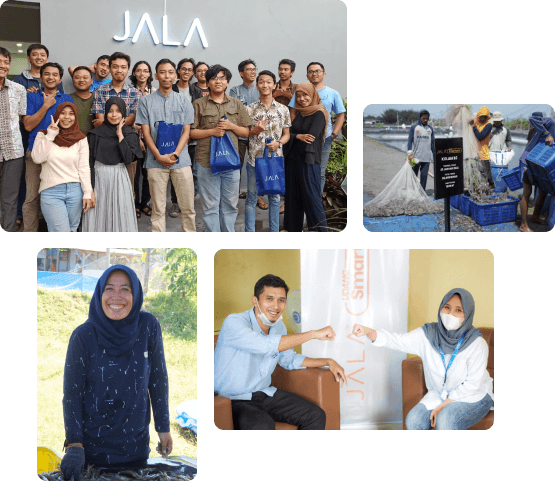
Nursery pond serves as a transition area that ensures post-larvae grow stronger, healthier, and more uniform before being transferred to the grow out pond. However, many nursery ponds fail due to poor management practices, resulting in low survival rates, stunted growth, and inefficient production. This article reviews real field cases of nursery pond failures and how to prevent them.
1. Overstocking Density
Stocking density that exceeds pond capacity can lead to competition for oxygen and feed, accumulation of organic waste, and stress among post-larvae, all of which increase mortality and cannibalism.
- Case study: Several farms in East Java maintained nursery ponds with densities reaching up to 1,000 PL/m². However, without sufficient aeration and water management, these ponds experienced mass mortalities of up to 40%.
- How to avoid it: Maintain an ideal stocking density of 500-700 PL/m² with adequate aeration. You can use a root blower or venturi system to distribute oxygen evenly throughout the pond. Regularly monitor key water parameters (DO, pH, temperature, and ammonia) to keep the environment optimal. Use Baruni to easily measure multi-parameter water quality in real-time and with high accuracy.
2. Overly Long Rearing Duration
Extending the nursery period too long can result in uneven growth, higher disease risks, and increased cannibalism.
- Case study: Some traditional nursery ponds keep post-larvae for up to 30 days, while the ideal duration is only 15-20 days. This practice often leads to stunted growth and a wide size variation up to 3-5 times the normal range, making grow-out management much more difficult.
- How to avoid it: Set the nursery period at around 15-20 days, with daily evaluations to ensure optimal growth. Conduct regular grading to separate post-larvae by size and apply a well-structured feeding SOP that matches the nursery phase in both feed type and frequency.






